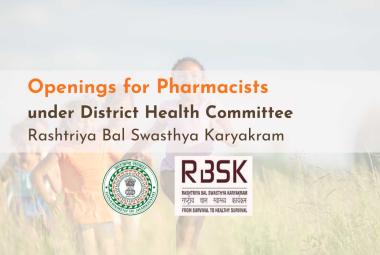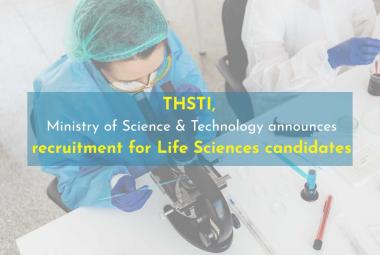{ DOWNLOAD AS PDF }
 ABOUT AUTHORS:
ABOUT AUTHORS:
M. Sushma*, T. V. V. Vidyadhar, M. Babu M.D., R. Mohan raj
*Department of Pharmacy Practice,
Raghavendra Institute of Pharmaceutical Education & Research, RIPER.
K R Palli Cross, Near S.K University, Anantapuramu District, Andhra Pradesh
sushma.banthi@gmail.com
ABSTRACT
Diabetic retinopathy, one of the leading causes of blindness for diabetic patients between the ages of 20 and 74. The clinical research provides control of blood glucose and blood pressure substantially reduces the risk of blindness due to diabetic retinopathy, many patients develop this eye disease and are at risk for serious vision loss, sometimes even despite outstanding metabolic control. Diabetic retinopathy occurs when high blood glucose damages the micro blood vessels in the retina which leads to leakage of small amounts of blood, serum, blood fats and blood proteins proliferates to vision loss and formation of scar tissue. Here the retinal laser therapy also called aslaser photocoagulation has greatly reduced the number of patients who lose vision to Diabetic retinopathy. Laser photocoagulation refers to the precise and concentrated application of high energy light, typically of a single wavelength called monochromatic light.
[adsense:336x280:8701650588]
REFERENCE ID: PHARMATUTOR-ART-2307
|
PharmaTutor (ISSN: 2347 - 7881) Volume 3, Issue 2 How to cite this article: M Sushma, TVV Vidyadhar, M Babu, R Mohanraj; A Review on Role of Laser Photocoagulation Therapy in Diabetic Retinopathy; PharmaTutor; 2015; 3(2); 8-18 |
Diabetic retinopathy[1]:
Diabetic retinopathies the most common diabetic eye disease, occurs due to change in the retinal blood vessels. Sometimes these vessels swell and leak fluid or even close off completely. Usually it affects both eyes. People whoare having this often don't notice changes in their vision in the early stages of disease. But as the disease progresses, usually causes vision loss that in many cases cannot be reversed.
Laser photocoagulation[1] [2]:
Laser photocoagulation surgery is used to treat a number of eye diseases andhas become widely used in recent decades. During the procedure, a laser is used to finely cauterize ocular blood vessels to attempt to bring about various Therapeutic benefits[1].
In diabetic retinopathy it is done to reduce the risk of vision loss. This involves directing a high-focused beam of light energy to create a coagulative response in the target tissue. In non-proliferative diabetic retinopathy (NPDR), laser photocoagulation is indicated in the treatment of clinically significant macular oedema.
Epidemiology[3]:
Diabetic retinopathy is the leading cause of new blindness in persons aged 25-74 years in the United States. Approximately 700,000 persons in the United States have proliferative diabetic retinopathy, with an annual incidence of 65,000. A recent estimate of the prevalence of diabetic retinopathy in the United States showed a high prevalence of 28.5% among those with diabetes aged 40 years and older.
[adsense:468x15:2204050025]
There are two types of diabetic retinopathy:
Types of diabetic retinopathy
1. Nonproliferative diabetic retinopathy (NPDR)[4] [5]
Non-proliferative diabetic retinopathy (NPDR) is the earliest stage of diabetic retinopathy. With this condition, damaged blood vessels in the retina begin to leak extra fluid and small amounts of blood into the eye. Sometimes, deposits of cholesterol or other fats from the blood may leak into the retina. NPDR can cause changes in the eye, including:

a. Small bulges in blood vessels of the retina that often leak fluid.
b. Tiny spots of blood that leak into the retina.
c. Deposits of cholesterol or other fats from the blood that have leaked into the retina.
d. Swelling or thickening of the macula caused by fluid leaking from the retina's blood vessels. The macula doesn't function properly when it is swollen. Macular oedema is the most common cause of vision loss in diabetes.
e. Small blood vessels (capillaries) close. Your vision blurs because the macula no longer receives enough blood to work properly.
Many people with diabetes have mild NPDR, which usually does not affect their vision. However, if their vision is affected, it is the result of macular oedema and macular ischemia.
2. Proliferative diabetic retinopathy (PDR)[4] [5]
Proliferative diabetic retinopathy (PDR) mainly occurs when many of the blood vessels in the retina close, preventing enough blood flow. In an attempt to supply blood to the area where the original vessels closed, the retina responds by growing new blood vessels. This is called neovascularisation. However, these new blood vessels are abnormal and do not supply the retina with proper blood flow. The new vessels are also often accompanied by scar tissue that may cause the retina to wrinkle or detach.PDR may cause more severe vision loss than NPDR because it can affect both central and peripheral vision. PDR affects vision in the following ways:
|
Vitreous haemorrhage: |
Delicate new blood vessels bleed into the vitreous, the gel in the centre of the eye preventing light rays from reaching the retina. If the vitreous haemorrhage is small, you may see a few dark floaters. A very large haemorrhage might block out all vision, allowing you to perceive only light and dark. Vitreous haemorrhage alone does not cause permanent vision loss. When the blood clears, your vision may return to its former level unless the macula has been damaged |
|
Traction retinal detachment: |
Scar tissue from neovascularisation shrinks, causing the retina to wrinkle and pull from its normal position. Macular wrinkling can distort your vision. More severe vision loss can occur if the macula or large areas of the retina are detached. |
|
Neovascular glaucoma: |
If a number of retinal vessels are closed, neovascularisation can occur in the iris. In this condition, the new blood vessels may block the normal flow of fluid out of the eye. Pressure builds up in the eye, a particularly severe condition that causes damage to the optic nerve. When blood sugar levels are too high for extended periods of time, it can damage capillaries that supply blood to the retina. Over time, these blood vessels begin to leak fluids and fats, causing oedema. Eventually, these vessels can close off, called ischemia. These problems are signs of non-proliferative diabetic retinopathy (NPDR). |
Different sites of diabetic occurrence in retina:

Signs &Symptoms[5]:
- Blurred vision, Sudden loss of vision in one eye, Seeing rings around lights, Dark spots or flashing lights
- It is also important to note that pregnancy and high blood pressure may aggravate diabetic retinopathy.

Causes[5]:
People with untreated diabetes are 25 times more at risk for blindness than the general population. The longer a person has had diabetes, the higher the risk of developing diabetic retinopathy. Fortunately, with regular, proper eye care and treatment when necessary, the incidence of severe vision loss has been greatly reduced. If you have diabetes, your ophthalmologist can help to prevent serious vision problems.
Pathogenesis of Diabetic retinopathy[2]:

Diagnosis[3]:
Laboratory studies of HbA1c levels are important in the long-term follow-up care of patients with diabetes and diabetic retinopathy.Imaging studies used in the diagnosis of diabetic retinopathy include the following:
- Fluorescein angiography: Micro aneurysms appear as pinpoint, hyperfluorescent lesions in early phases of the angiogram and typically leak in the later phases of the test.
- Optical coherence tomography scanning: Administered to determine the thickness of the retina and the presence of swelling within the retina, as well as vitraeo-macular traction.
- B-scan ultrasonography
Different diagnostic retina showing signs of diabetic retinopathy:

Risk Factors[3] [6]
- Poorly-controlled diabetes
- High blood pressure
- Long-term duration of diabetes
- Elevated blood cholesterol levels
- Sleep apnea
Treatment and drugs Management
Primary prevention[3] [7] [8]
|
Glycaemic control |
Blood pressure control |
|
Optimal glycaemic control (usually aiming to bring HbA1c levels to <7%, ideally around 6.5%) is associated with improved long-term outcomes and delayed progression of retinopathy. However, in some cases, particularly with pre-proliferative and proliferative retinopathy, intensive glycaemic control (e.g. HbA1c at 6.0%) can initially bring on a decompensation and worsening of symptoms and signs and is also associated with increased mortality. Pioglitazone should be avoided in the presence of macula oedema. |
Good control of blood pressure (target: 140/80 mm Hg or lower) reduces the progression of DR significantly and is associated with a 32% reduction in diabetes-related deaths. If possible, aim for systolic ≤130 mm Hg in those with established retinopathy and/or nephropathy. Specific therapies blocking the renin-angiotensin system (RAS) may have additional benefits, particularly for mild retinopathy, but should be discontinued during pregnancy. |
|
Lipid control |
Smoking cessation |
|
Lipid-lowering therapy has been shown to reduce the risk of progression of diabetic retinopathy, particularly macular oedema and exudation. Consider adding fenofibrate to a statin for non-proliferative retinopathy in type 2 diabetes. A healthy, balanced diet and exercise should be discussed with the patient. The Fenofibrate Intervention and Event Lowering in Diabetes (FIELD) study was more promising, showing that fenofibrate, a lipid-lowering fibrate, reduced the need for laser treatment of sight-threatening DR (either for macular oedema or proliferative retinopathy) by 31% over five years. |
The Diabetic Retinopathy Candesartan Trials (DIRECT) looked at the effect of candesartan, an angiotensin-II receptor antagonist, on these patients and found somewhat equivocal results. In patients with type 1 diabetes, there was a modestly reduced incidence of retinopathy by 18% but there was no effect on the progression of existing retinopathy. In patients with type 2 diabetes, there was a significantly increased regression of existing retinopathy by 34% and progression was reduced by 13% (this last finding was not statistically significant |
Treatment for diabetic retinopathy depends on the stage of the disease and is directed at trying to slow or stop the progression of the disease. In mild cases, treatment for diabetic retinopathy is not necessary. Regular eye exams are critical for monitoring progression of the disease. Strict control of blood sugar and blood pressure levels can greatly reduce or prevent diabetic retinopathy. In more advanced cases, treatment is recommended to stop the damage of diabetic retinopathy, prevent vision loss, and potentially restore vision.
NOW YOU CAN ALSO PUBLISH YOUR ARTICLE ONLINE.
SUBMIT YOUR ARTICLE/PROJECT AT editor-in-chief@pharmatutor.org
Subscribe to Pharmatutor Alerts by Email
FIND OUT MORE ARTICLES AT OUR DATABASE
Treatment options include[9] [10]:
|
Anti-VEGF therapy (Avastin, Lucent is, Eylea) |
Intraocular steroid injection |
|
Anti-VEGF therapy involves the injection of the medication into the back of your eye. The medication is an antibody designed to bind to and remove the excess VEGF (vascular endothelial growth factor) present in the eye that is causing the disease state. The FDA has approved Lucent is for macular oedema and additional treatment options include Avastin and Eylea. |
Intraocular steroid injection is a treatment for diabetic macular oedema. This therapy helps reduce the amount of fluid leaking into your retina, resulting in visual improvement. Due to the chronic nature of diabetic eye disease, this treatment may need to be repeated or combined with laser therapy to obtain maximum or lasting effect. |
|
Laser surgery |
Vitrectomy |
|
Laser surgery is often helpful in treating diabetic retinopathy. To reduce macular oedema, a laser is focused on the damaged retina to seal leaking retinal vessels. For abnormal blood vessel growth (neovascularisation), the laser treatments are delivered over the peripheral retina. The small laser scars that result will reduce abnormal blood vessel growth and help bond the retina to the back of your eye, thus preventing retinal detachment. Laser surgery may be performed in your ophthalmologist's office or in an outpatient clinic. Laser surgery can greatly reduce the chance of severe visual impairment. |
Vitrectomy may be recommended in advanced proliferative diabetic retinopathy. During this microsurgical procedure that is performed in the operating room, the blood-filled vitreous is removed and replaced with a clear solution. Your ophthalmologist may wait several months to a year to see if the blood will clear on its own before going ahead with surgery. In addition to a Vitrectomy, retinal repair may be necessary if scar tissue has detached the retina from the back of your eye. Severe loss of vision or even blindness can result if surgery is not performed to reattach the retina. |
Retinal Laser Photocoagulation treatment[12]:
Photocoagulation involves proteindenaturation and is the result of tissue absorption of radiantenergy with conversion to heat[12] [13]. It should not to be confusedwith photo-disruption and photo-ablation, which entaildistinct molecular reactions and are utilised more commonlyin the anterior segment and for refractive eye surgery. Whilephotocoagulation is possible using visible light, the inventionof laser revolutionised retinal therapy by facilitating moreprecise, reliable and less painful application ofphotocoagulation.Its effectiveness and non-invasive methods of applicationhave made laser photocoagulation the standard of care formany retinal conditions.
Laser Wavelengths in Laser Photocoagulation:
Photocoagulators produced light comprised ofvarious wavelengths within the visible and infrared spectrum.Hence, full thickness retinal burns were achieved rather thantissue specific burns that were later made possible by laserphotocoagulators[14]. The first ophthalmiclaser was the ruby laser, invented by Maimann in 1960. Inaddition to its efficacy in controlling PDR, this solid-statelaser was more compact and reliable than its predecessor thexenon-arc coagulator. Then in 1968, L’Esperanceintroduced the argon laser which led to the widespread use ofophthalmic laser photocoagulation[15].
Clinical Applicationsof Laser Photocoagulation[12] [16]:
- Diabetic Retinopathy iscategorised into non-proliferative diabetic retinopathy(NPDR) and proliferative diabetic retinopathy (PDR).
- NPDR is characterised by varying degrees of microaneurysms, retinalhaemorrhages, hard exudates, cotton wool spots, macularoedema, venous beading and loops, intra-retinalmicrovascular abnormalities, and capillary non-perfusion.
- New vessel formation is the hallmark of PDR and is usuallyfound in conjunction with variable degrees of the abovefeatures. These vessels are fragile and associatedwith fibrosis and traction. If allowed to proliferate, there is anincreased risk of vitreous haemorrhage and retinaldetachment.
- Diabetic macular oedema (DMO) can occur at any stage of DRand is the leading cause of severe visual morbidity in diabeticpatients[17].
- Retinal thickening is a consequence ofaccumulated fluid originating from leaking microaneurysmsand diffuse capillary leakage. Leaking microaneurysms can betreated with focal laser, while diffuse capillary leakagerequires application of macular grid laser, which spares thefoveal avascular zone.
Common retinal conditions treated with types of lasers[12]
|
Retinal condition |
Laser therapy[12] [18] [19] |
|
Proliferative diabetic retinopathy (PDR) |
Panretinal photocoagulation (PRP) involves 1000-2000laser burns to the peripheral retina. Subsequent regressionof neovascularisation reduces the chance of vitreoushaemorrhage and tractional retinal detachment. |
|
Diabetic macular oedema (DMO) |
Focal laser targetsleaking microaneurysms.Macular grid laser targetsdiffuse capillary leakage. The foveal avascular zone is not lasered |
|
Macular oedema in branch retinal vein occlusion (BRVO) |
Macular grid laser as for DMO |
|
Central retinal vein occlusion (CRVO) |
Chorioretinal venous anastamosis is achieved throughtargeted laser photocoagulation that allows venous bloodto bypass the site of obstruction and enter the choroid. PRP can be done if neovascularisation occurs |
|
Retinal tears |
Retinopexy is performed by laser application around thebreak to seal retina to RPE and choroid |
|
Retinopathy of prematurity (ROP) |
Laser is applied to avascular retina to retard furthergrowth of abnormal vessel into this regionThis prevents traction and subsequent retinal detachment |
|
Leaking arterial macroaneurysms |
Laser photocoagulation applied to or surrounding themacroaneurysm causes it to thrombose or sclerosethus reducing exudation and risk of haemorrhage |
|
Retinal ischaemia due to vasculitis, retinal vein or arterial occlusion |
Laser ablation of hypoxic retinal tissue reduces the releaseof angiogenic growth factors that stimulatesneovascularisation. |
Laser Deliveryin treating with Laser Photocoagulation[12] [18]:
Laser photocoagulation can be applied to the retina viaseveral routes.
- The most common is trans-pupillary lasereither performed on slit lamps through specialised contactlaser lenses, or with binocular indirect ophthalmoscopythrough non-contact lenses.
- The latter is useful for peripheralretinal lesions as this apparatus offers a wider field of view.
- Laser can also be transmitted via fibreoptics to an endolaserprobe for intraocular delivery during vitreo-retinal procedures.
- Contact probes are also available for trans-scleral application.
- Another sub-threshold laser system, RetinaRegeneration Therapy (Ellex 2RT, Ellex Medical Lasers,Atlanta) is currently being evaluated.
The Mechanism of Retinal Photocoagulation[20]
Oxygen plays an important role in thetreatment of an ischaemic disease. Diabetic retinopathy and retinal veinocclusions are ischaemic diseases, characterised by capillary non-perfusion and a lack of blood flow and oxygen. The ischaemic hypoxiastimulates the production of cytokines such as vascular endothelialgrowth factor (VEGF), resulting in neovascularisation and oedemaformation. Traditional laserphotocoagulation of the retina simplydestroys some of the photoreceptors, reduces the oxygen consumptionof the retina and re-establishes a balance between the oxygen supply and demand.
Pan-retinal Photocoagulation[20] [21]
It is clinicalpractice to deliver mild to moderate laser burns that produce a lightgrey spot on the retina. Such a mild to moderate laser application willcoagulate the retinal pigment epithelium and the adjacentphotoreceptors, but leave the inner retina intact[21].Thephotoreceptors use more oxygen than most cells in the body anddestroying them is an effective way of reducing the oxygenconsumption of the retina.
A typical pan-retinal photocoagulationpattern of about 1,200–1,500 burns of 0.5mm diameter may reducethe number of photoreceptors and the oxygen consumption of theouter retina by approximately 20%Normally, oxygen from the choroid does not reach the innerretina in humans; however, this is no longer true if the photoreceptorshave been destroyed and the outer retinal oxygen consumptiondramatically decreased.
The oxygen flux from the choroid can nowpenetrate the outer retina without being consumed and can reach theinner retina, where it elevates the oxygen tension[22] [23]and improveshypoxia (see Fig.A)This extra supply of oxygen to the innerretina compensates for the reduced supply by the retinal circulation.Hypoxia is corrected and the production of hypoxia-induced cytokinessuch as VEGF is normalised[24] [25] (see Fig. B). Hypoxia is the natural stimulant for VEGF, and neovascularisationand correction of this hypoxia by laser treatment is a perfect way to stopthis process.


Prognosis[6]:
* Prognostic factors that are favourable for visual loss
· Criminate exudates of recent onset
· Well-defined leakage
· Good peritoneal perfusion
* Prognostic factors that are unfavourable for visual loss
· Diffuse oedema/multiple leaks
· Lipid deposition in the fovea
· Macular ischemia
· Cystoid macular oedema
· Preoperative vision of less than 20/200
· Hypertension
- The treatment of diabetic retinopathy has tremendous costs, but it has been estimated that this represents only 1/8th of the costs of Social Security payments for vision loss. This cost does not compare to the cost in terms of loss of productivity and quality of life.
- The Early Treatment for Diabetic Retinopathy Study has found that laser surgery for macular oedema reduces the incidence of moderate visual loss from 30% to 15% over a 3-year period.
CONCLUSION
Retinal laser therapy is useful for minimizing fluid leakage from damaged blood vessels in the macula. It is done by cauterizing the leaky vessels. This retinal laser therapy applied to the macula to reduce the risk of substantial worsening of vision from significant diabetic macular oedema (DME). It is performed in a right time in patients who have excellent vision when diagnosed. Laser therapy causes regression of the abnormal blood vessels found in proliferative diabetic retinopathy (PDR). The literature showed that one to several thousand laser burns applied outside the macula reduces the risk of severe vision loss. It is thought that sacrificing some of the peripheral retina, by destroying it with laser burns, turns off the chemical messengers causing abnormal blood vessel proliferation, thereby protecting the macula and vision from more severe injury due to PDR.
A lot of research and effort has gone into developing new medications for treating serious DR before it causes irreversible damage to the retina. While these drugs hold great assure for treating and preventing blindness due to diabetic retinopathy. Laser photocoagulation remains the “gold standard.” Even with its limitations, retinal laser therapy has unquestionably saved the vision. Unfortunately, this treatment will not renovate vision that has been lost. For that, we must look for the better outcome with management of individualised patient care. Early identification of the disease will help to prevent the loss of vision. Novel treatment options will hopefully, become the complimentary for the patients with present therapies. Higher energy levels andlonger exposure are required to achieve similarphotocoagulation effects which leads to a consequence ofgreater patient discomfort. Fortunately, diode lasers arenow available in a variety of visible wavelengths. Theseportable, economical lasers are fast becoming the favour edoption for ophthalmologists purchasing new platforms.
REFERENCES
1. Diabetic retinopathy guidelines; Royal College of Ophthalmologists (Dec 2012)
2. Lawrence, Peter F; Bell, Richard M; Dayton, Merril T (2006). Essentials of surgical specialities. Lippincott Williams & Wilkins
3. (Ockrim Z, Yorston D; managing diabetic retinopathy. BMJ. 2010 Oct 25; 341:c5400. Doi: 10.1136/bmj.c5400.
4. Parodi MB, Bandello F. Branch retinal vein occlusion: classification and treatment. Ophthalmological. 2009; 223(5):298-305. [Medline]
5. Diabetes - type 2; NICE CKS, July 2010
6. Bhavsar AR et al; Diabetic Retinopathy, Medscape, Jun 2012
7. Mohamed Q, Gillies MC, Wong TY; Management of diabetic retinopathy: a systematic review. JAMA. 2007 Aug 22;298(8):902-16.9
8. Liew G, Mitchell P, Wong TY; Systemic management of diabetic retinopathy. BMJ. 2009 Feb 12; 338:b441. Doi: 10.1136/bmj.b441.
9. geteyesmart.org/eyesmart/diseases/diabetic-retinopathy.cfm
10. Virgili G, Parravano M, Menchini F, et al; Antiangiogenic therapy with anti-vascular endothelial growth factor modalities for diabetic macular oedema. Cochrane Database System Rev. 2012 Dec 12; 12:CD007419. Doi: 10.1002/14651858.CD007419.pub3.
11. midatlanticretina.com/retinal-laser-photocoagulation.php
12. J H Lock /University of Malaya Eye Research Centre (UMERC), Department of Ophthalmology/Retinal Laser Photocoagulation /CONTINUING MEDICAL EDUCATION /Med J Malaysia Vol 65 No 1 March 2010
13. Kulkarni GR. Laser-tissue interaction studies for medicine. Bulletin of Material Sciences 1988; 11: 239-44.
14. Krauss JM, Puliafito CA. Lasers in ophthalmology. Lasers Surg Med 1995; 17: 102-59.
15. L'Esperance FA, Jr. An opthalmic argon laser photocoagulation system: design, construction, and laboratory investigations. Trans Am Ophthalmol Soc 1968; 66: 827-904
16. Dyer DS, Bressler SB, Bressler NM. The role of laser wavelength in the treatment of vitreoretinal diseases. Curr Opin Ophthalmol 1994; 5: 35-43.
17. Tasman W, Jaeger EA. Duane's Clinical Ophthalmology. Philadelphia: Lippincott Williams & Wilkins, 2005.
18. Freeman WR, Bartsch DU. New ophthalmic lasers for the evaluation and treatment of retinal disease. Aust N Z J Ophthalmol 1993; 21: 139-46
19. McAllister IL, Constable IJ. Laser-induced chorioretinal venous anastomosis for treatment of nonischemic central retinal vein occlusion. Arch Ophthalmol 1995; 113: 456-62.
20. Einar Stefánsson /The Mechanism of Retinal Photocoagulation /Posterior Segment Retina /EUROPEAN OPHTHALMIC REVIEW /TOUCH BRIEFINGS 2008
21. Novack RL, Stefansson E, Hatchell DL, Intraocular pressure effects on optic nerve-head oxidative metabolism measured in vivo, Graefes Arch Clin Exp Ophthalmol, 1990;228:128–33
22. Molnar I, Poitry S, Tsacopoulos M, et al., Effect of laser photocoagulation on oxygenation of the retina in miniature pigs, Invest Ophthalmol Vis Sci, 1985;26:1410–14
23. Landers MB III, Stefansson E, Wolbarsht ML, Panretinal photocoagulation and retinal oxygenation, Retina, 1982;2:167–75.
24. Augustin AJ, Keller A, Koch F, et al., Effect of retinal coagulation status on oxidative metabolite and VEGF in 208 patients with proliferative diabetic retinopathy, Klin Monatsbl Augenheilkd, 2001;218:89–94
25. Lip PL, Belgore F, Blann AD, et al., Plasma VEGF and soluble VEGF receptor FLT-1 in proliferative retinopathy: relationship to endothelial dysfunction and laser treatment, Invest Ophthalmol Vis Sci, 2000;41:2115–19
26. Pournaras CJ, Retinal oxygen distribution. Its role in the physiopathology of vasoproliferative microangiopathies, Retina, 1995; 15:332–47.
NOW YOU CAN ALSO PUBLISH YOUR ARTICLE ONLINE.
SUBMIT YOUR ARTICLE/PROJECT AT editor-in-chief@pharmatutor.org
Subscribe to Pharmatutor Alerts by Email
FIND OUT MORE ARTICLES AT OUR DATABASE









